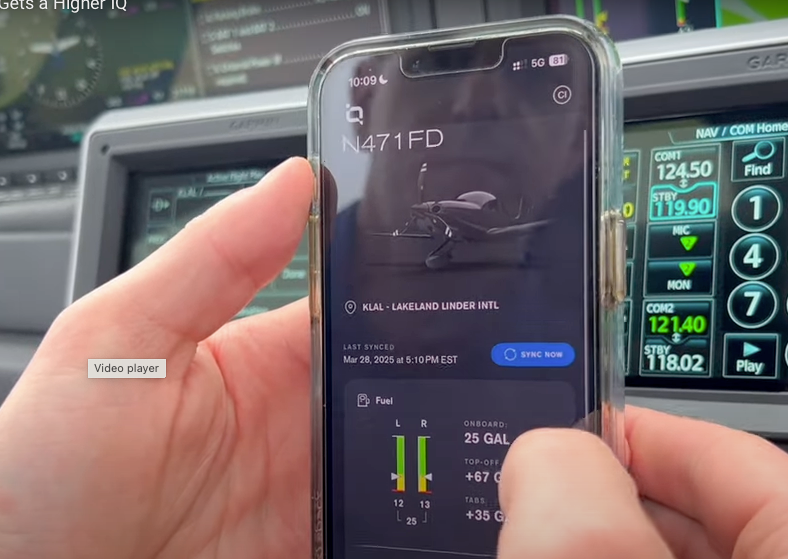General Aviation Accident Bulletin
AVweb’s General Aviation Accident Bulletin is taken from the pages of our sister publication, Aviation Safety magazine. All the reports listed here are preliminary and include only initial factual findings…

Aviation Safety Accident Bulletin
AVweb's General Aviation Accident Bulletin is taken from the pages of our sister publication, Aviation Safety magazine. All the reports listed here are preliminary and include only initial factual findings about crashes. You can learn more about the final probable cause on the NTSB's website at www.ntsb.gov. Final reports appear about a year after the accident, although some take longer. Find out more about Aviation Safety at www.aviationsafetymagazine.com.
January 21, 2021, Eagle Point, Ore.
Randy W. Maloney M1 Experimental
The experimental airplane was destroyed at about 1200 Pacific time when it hit terrain after colliding with a cable while maneuvering for a forced landing. The pilot and passenger received minor injuries. Visual conditions prevailed.
While in cruise at 3000 feet MSL, the engine began to sputter and the airplane entered a descent. In anticipation of a forced landing, the pilot flew toward farm fields. At about 50 feet AGL, engine rpm began to increase slightly, so the pilot opted to maintain what altitude was available. While at that low altitude, the airplane struck a cable and then a tree adjacent to an open field. The pilot and passenger egressed with only minor injuries prior to the airplane catching fire.
January 21, 2021, Minneola, Fla.
Quad Cities Challenger II Experimental
The pilot/owner of the pusher-configured experimental was seriously injured after the airplane lost “propulsion,” then took a “nose-dive” and impacted terrain, resulting in substantial damage to the fuselage and both wings. The accident occurred at about 0945 Eastern time. Visual conditions prevailed. Post-accident examination of the airplane revealed the propeller-to-engine drive belt was broken and laying across the empennage.
January 23, 2021, Denton, N.C.
Cessna U206G Stationair
The airplane was substantially damaged at about 1455 Eastern time during an off-airport landing following loss of engine power. The pilot and copilot were not injured. Visual conditions prevailed for the aerial survey flight.
While flying a grid pattern at about 250 feet AGL, the engine “rolled back” and started to lose power. The airplane immediately began to lose altitude; the PIC turned toward a field just ahead of them and set up for landing. During landing, the airplane bounced back into the air; on the second touchdown, the nose gear fractured and bent under the fuselage. The airplane slid into some trees and both pilots egressed through the door. Examination revealed the firewall was creased and the right rear engine mount structure was cracked.
January 24, 2021, Boynton Beach, Fla.
Piper PA-28-161 Warrior II/III
At about 2000 Eastern time, the airplane was destroyed when it collided with the Atlantic Ocean. The solo private pilot was fatally injured. Night visual conditions prevailed.
The airplane took off at about 1955, climbed to 1000 feet msl and turned to a southerly heading before ATC cleared the flight to “follow the shoreline northbound at or below 500 feet.” At 1958:37, the pilot acknowledged the instructions and read back the altimeter setting as the airplane began a descending left turn to the east. Shortly, ATC assigned the airplane a new transponder code, which the pilot acknowledged. At 1959:25, the airplane was crossing the beach eastbound at 225 feet and descending. Once over water, the airplane’s track depicted a shallow, descending left turn. At 2000:00, the controller repeated the transponder instructions, but the airplane’s ADS-B position was no longer being received and there was no further communication. The airplane was recovered two days later. Examination of the airframe and engine revealed no pre-impact mechanical anomalies.
January 26, 2021, Waller, Texas
Zenair Zodiac 601HDS Experimental
A forced landing at about 1525 Central time resulted in substantial damage to the airplane and serious injury to the solo pilot. Visual conditions prevailed.
The pilot later reported the engine lost power shortly after takeoff. He recalled the preflight run-up and takeoff were normal but, at about 150 to 200 feet AGL, there were two “pops” and the engine lost power. He executed a forced landing to an open field.
January 26, 2021, Salish Sea, Wash.
Cessna 170A
The airplane was substantially damaged when it was ditched after apparent fuel exhaustion at about 1640 Pacific time. The solo pilot was fatally injured. Visual conditions prevailed.
While en route, the pilot was in contact with his mother via text messaging. At around 1525, he stated there was a severe headwind and expressed concern about having enough fuel to complete the flight. Fifteen minutes later, he texted that his GPS indicated he had been airborne for 5.7 hours and had estimated another 1.1 hours before reaching his destination, for an ETA of 1647. He noted headwinds were slowing his progress and it was taking longer than expected to circumnavigate numerous clouds.
Radar data showed the accident aircraft going “feet wet” at 1634, at an altitude of about 1200 feet MSL, some 10 miles north of his destination. At about 1637, the pilot texted his mother an image showing a marine vessel towing a barge in the water below. Radar “hits” continued south for about 5.4 NM until, at 1638:06, the returns were consistent with the airplane reversing course and heading north-northeast, with decreasing airspeed and a gradual decent to 400 feet. The last radar return was 2.9 NM from the closest land. At 1638:47, the pilot broadcast a Mayday call over the destination airport’s Unicom frequency, stating he was out in the middle of the water and was ditching by a boat that was towing a barge.
This article originally appeared in the April 2021 issue of Aviation Safety magazine.
For more great content like this, subscribe to Aviation Safety!






